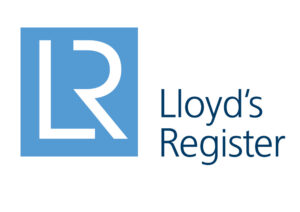 The Smart Container Alliance has been officially launched to drive the adoption of smart container technology.
The Smart Container Alliance has been officially launched to drive the adoption of smart container technology.
This initiative unites industry leaders to enhance cargo traceability, fortify maritime trade, and support global enforcement agencies in combating criminal networks. With geopolitical instability and climate disruptions posing risks to global trade, shipping companies must prioritize security and efficiency. The Alliance aims to advance industry standards, advocate for policy change, and foster collaboration among technology providers, shipowners, customs authorities, and international regulatory bodies like the EU and World Customs Organization (WCO).
“Smart Cargo and Container Telematics are the foundation for the 21st Century Supply Chain with revolutionary new solutions for our society, authorities, governments, and businesses to structurally reduce illicit trade, cargo contamination, cargo waste, theft, and supply chain carbon footprint while simultaneously enhancing product authentication, on-time delivery commitments, asset productivity, and cargo integrity and quality”, said Charles Vincent, CEO ARVIEM. Continue reading “Smart Container Alliance launched to evolve the container industry”
 Shipowners and operators of EU vessels must take steps to ensure that all new firefighting suits on board comply with changes to European regulations which enter into force from June 2025, according to urgent advice from
Shipowners and operators of EU vessels must take steps to ensure that all new firefighting suits on board comply with changes to European regulations which enter into force from June 2025, according to urgent advice from 
 The U.S. National Transportation Safety Board have released the results of a report after the installation of an incorrect valve in a pipe to a diesel oil tank led to a fatal fire aboard a cargo vessel docked in LaPorte, Texas.
The U.S. National Transportation Safety Board have released the results of a report after the installation of an incorrect valve in a pipe to a diesel oil tank led to a fatal fire aboard a cargo vessel docked in LaPorte, Texas.


 Addressing anticipated skill gaps in artificial intelligence (AI), robotics, and automation is essential to the future of the shipbuilding sector, according to a new report by the National Manufacturing Institute Scotland (NMIS), operated by the University of Strathclyde and based at the Advanced Manufacturing Innovation District Scotland (AMIDS) in Renfrewshire.
Addressing anticipated skill gaps in artificial intelligence (AI), robotics, and automation is essential to the future of the shipbuilding sector, according to a new report by the National Manufacturing Institute Scotland (NMIS), operated by the University of Strathclyde and based at the Advanced Manufacturing Innovation District Scotland (AMIDS) in Renfrewshire. The 2024/2025 Shipping Industry Flag State Performance, published by the International Chamber of Shipping (ICS), indicates that flag administrations continue to demonstrate high levels of performance with respect to enforcement of global shipping regulations.
The 2024/2025 Shipping Industry Flag State Performance, published by the International Chamber of Shipping (ICS), indicates that flag administrations continue to demonstrate high levels of performance with respect to enforcement of global shipping regulations.
 In recent years, IIMS has published a number of articles about the growing problem of what to do with end-of-life boats and the challenges of recycling them. It remains a thorny subject.
In recent years, IIMS has published a number of articles about the growing problem of what to do with end-of-life boats and the challenges of recycling them. It remains a thorny subject. On November 27, 2024, approximately 100 nautical miles off the coast of Virginia, a bulk carrier shipping a type of coal called “Bailey High Vol Coking Coal” experienced consecutive explosions in the two forward cargo holds. While still under investigation, the explosions are likely a result of the accumulation of methane gas that created an explosive atmosphere and resulted in significant damage to the two associated cargo holds. It was soon discovered that the other five cargo holds also had highly elevated levels of methane that were
On November 27, 2024, approximately 100 nautical miles off the coast of Virginia, a bulk carrier shipping a type of coal called “Bailey High Vol Coking Coal” experienced consecutive explosions in the two forward cargo holds. While still under investigation, the explosions are likely a result of the accumulation of methane gas that created an explosive atmosphere and resulted in significant damage to the two associated cargo holds. It was soon discovered that the other five cargo holds also had highly elevated levels of methane that were